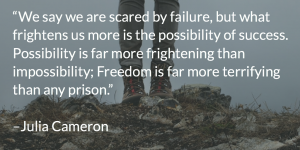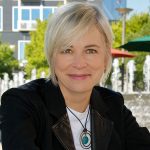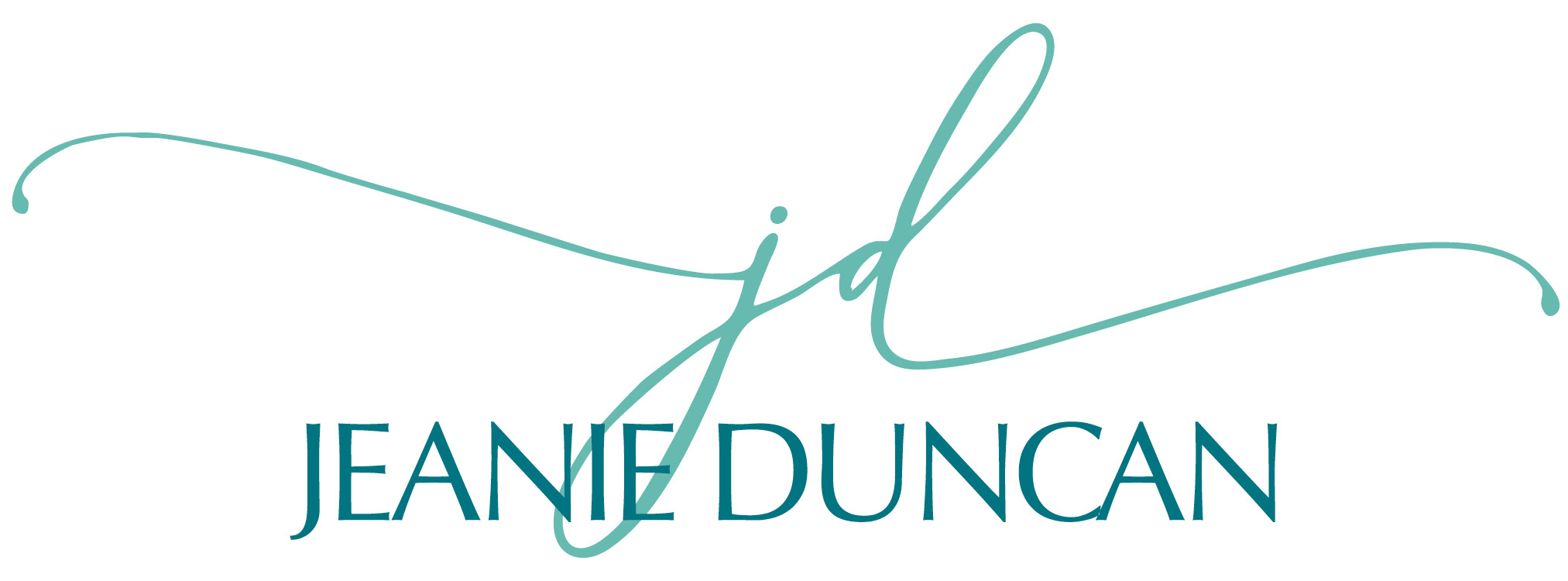Sep 1, 2011 | Leadership
(A guest blog post by: Michael Wilkerson, Assistant Professor of Arts Management at American University. As posted on the American’s for the Arts ArtsBlog at http://blog.artsusa.org/2011/02/25/what-is-leadership-an-eals-blog/)
Leadership. As someone who loves to lecture (sorry, students), even my own eyes glaze over at the word. Go to any business section of any bookstore and you can find hundreds of tomes that boil down to one extended metaphor in the form of a book length advice column: “The fiction writer’s way of leadership,” The housewife’s way of leadership,” “Leadership: the Mad Men Method,” “How Would Jesus Lead (HWJL)?”
Okay, I made those up, but among this blizzard of works on leadership, what actually helps? We’ll try to find some answers at the symposium. My views are too complex to reduce to sound bites or slick metaphors, probably because I believe leadership is not solely about the leader as much as it is his or her interaction with co-workers, or followers.
We make too many assumptions that the CEO is The Leader. But one can lead from the middle (director of marketing) or even below (program associate). The weird irony of organizations seems to be that those who hold leadership positions are not necessarily any good at leading. Yet spectacular feats of leadership can occur at any level. Followers influence leaders with their ideas and their ways of working, and more importantly, they influence each other.
To me, leadership is about understanding the environment in which you operate, the assets (people and other resources) you have available, and making sure that you are getting the most out of those assets. Which may sound like working folks harder, but it really means inspiring them to bring you their best selves, not filling up all their waking hours. A really good leader can sometimes appear to be doing nothing, because he/she has been so successful at empowering employees, at turning them into leaders.
We spend too much time thinking about leadership and not enough about “followership.” What does it mean to work “for” someone? In my years as assistant to several university vice presidents, we followers debated one core issue: are we there to make the big boss look good, or to enable him or her to do good? The former takes no courage whatsoever; the latter is all about courage, about speaking truth to power (“no, boss, it would be wrong of you to make that decision”), about listening harder and more carefully to others, about participating so deeply in the life of the organization that you can be confident that you can identify a wrong or right decision when you see it coming.
There’s a book by Ira Chaleff called The Courageous Follower. I’d recommend that everyone slavishly tromp your way to the bookstore and buy a copy.
Emerging Arts Leaders Symposium. It sounds like a conference for butterflies who are about to emerge from their chrysalises, dry off their wings, and magically fly. As Russell Taylor, president of National Arts Strategies, says, “You have already emerged.” It’s not a moment but a process. I see leadership in all kinds of ways from my students, even the ones who would be the first to say, “I’m not ready.” So shorten the learning curve and take your power. Lead from where you are.
In closing, let me tell you a secret: even old, veteran, longtime leaders feel insecure about this leadership stuff. Even if your organization never changes mission, the environment is never stable. Consequently, what’s required of a leader is constant adaptation and prescience. Therefore, the old guard does not stand in your way, so much as it hungers for your help.
Jul 1, 2011 | Career
A good friend and colleague once said to me, “You should always consider yourself ‘on the market.’” She offered this in the context of a conversation we were having about job searching, and the thoughts of beginning a search as if it’s an “event” – like a switch you flip or trigger you pull.
Job searching is a daunting process with a long list of tasks: revise resume, update Linked In, connect with your network, search the internet, prepare for interviews, and so on. Yet, if you embrace a mind shift and always think of yourself in marketing terms – product, supply, demand, audience – it removes some of that pressure.
Consider for a moment: If you’re perpetually ‘on the market,’ it implies you are ‘at the ready’ and poised for opportunities. Shouldn’t we all be? Afterall, if you don’t continually refine and sharpen your unique attributes, present and market yourself, who will? You are your #1 agent and champion. Position yourself as such.
– Refine your resume and have it ready for the right opportunity. Perhaps this is something you do annually or biannually, associated with your performance review.
– Maintain an updated Linked In, complete with the key words and phrases to showcase your attributes and attract your desired opportunity and direction.
– Be a serial networker, building relationships to develop your personal and professional capital among key people. Within your broader network of contacts, cultivate a smaller core of your closest allies. The more diverse (in terms of position, geography, skillset, etc.) that top group is, the better. It will extend your reach and influence.
– Perform at your best in the present moment while knowing what you want most for your future. Focus on that target, understanding that it continually evolves.
– If this target requires additional education or skill development, take steady action in small, achievable steps to acquire it so you’ll be ready.
– If an opportunity you seek is a significant shift, perhaps it’s in a different company division or a new industry altogether, find ways to connect and position yourself among the leadership and in the environments you desire.
– Know your top three to five strengths and be able to talk about them in terms of the value you can deliver. Resist the temptation to sell everything you can do. You’ll come across as a generalist and lessen your leverage.
– Identify and work with an executive coach. It’s an investment that will yield great dividends – an outside perspective to help you gain a greater sense of awareness and cultivate your own inner knowing to chart your course.

Jun 1, 2011 | Creativity, Transition & Change

Have you ever dreamt of taking time off? I’m not talking about just a week’s vacation, but longer – a month, two months, six months, a year? What would it be like to wake up at your own pace, spend the day doing exactly as you please, and sleep like a baby through the night? Sounds blissful, doesn’t it?
For me, time off had always been postponed indefinitely to ‘someday’ until November 23, 2009. I had arrived at a sense of completion with my tenure as President & CEO of the United Arts Council of Greater Greensboro (a post I held for nearly seven years), having achieved the goals I had set for the organization: debt elimination, significant revenue growth, focusing of organizational priorities, creating a new business model, and shoring up board and staff leadership. I knew the moment was right for me to depart, unplug, and give my careful thought and energy to shaping what came next.
It was then that I began a one-year sabbatical – a luxury of time and space to hit the pause button, play, explore some creative pursuits, and see what possibilities would emerge.
Before I left the UAC, a good friend of mine offered some sage advice. It began with a question, “So, what are you going to do the day after…when you wake up and you’re not President of the UAC?” she queried. Then she continued, “You’ve been with the organization for twelve years. It’s a consuming, very public and high profile position.” It was true. I always felt ‘on,’ the work absorbing every available moment of time like water rushing over rocks, filling every crevice. And I had loved it. I silently realized that her question more specifically was “had I become the role?”
I let this question marinate a bit in my mind. “I don’t think I am the role,” I thought. “I surely hope I’m not.” But it did make me think. And it did make me a little more planful, especially with the first few weeks of my time off…if only to avoid the potential meltdown (or ‘breakdown’) that my friends worried about.
I can say that the initial transition was a non-event; it was just fine, even great. I woke up that first morning and treated it like the beginning of a lengthy vacation that it was. I stayed in my PJs all day…maybe even all week. I really don’t remember. What I do remember is that I knew immediately I was not ‘The Role’. I never – not once – looked back or felt any remorse. It was so reassuring and validating for me to realize that the time truly had been right for me to leave the UAC. I was indeed satisfied with what I had set out to do for the organization, and I had reached my professional goals.
I began to know then what I have now tested and proven to myself: It’s okay to slow down. I needed time to just be. We all do. To be still, to think, pay attention, be aware, actually stop and notice things. Anything. Everything. To look at people – really see them. To sit down and enjoy a meal – savor it. Read a magazine – every page cover to cover. Breathe. Do you ever pause to notice your breathing? Ever catch yourself taking those short, shallow breaths? Or maybe even wonder if you’re hardly breathing at all?
Like all those work goals I had targeted and endless to-do lists, I prepared and approached my sabbatical in the same purposeful way. But I was careful about it. I avoided the tendency to try to do too much…thanks to lots of coaching by family and friends. They knew me. My list was whittled down from 63 to 48, then 12 and finally about six items. After these early adjustments, I avoided the “do everything you ever wanted to do but hadn’t had the time to do” approach and set out to explore these priorities.
I had this bookshelf filled with books ‘collected’ to read one day. Well, one day was now today. It felt so good to stand in front of those books stacked to the ceiling and make my first selection. It felt even better to give myself permission to read…all day long, every day for a week or longer. To get into the flow and stay there for a while. Now that is living slow! It also fulfilled a “journey of the mind,” so to speak, to explore and learn new things.
All the “white space” on my calendar gave me time to tune in to personal health and wellness; while this had been a focus, I now had newfound time and energy to devote to it. I began running about three years ago, in 2008, participating in a few 5k events and built up to 10k’s the following year. Now, in January 2010, I decided I would train for a half marathon – only now, I didn’t have to work in my runs between sundown and sunup. I hardly knew what it was like to run in the daylight. This would require more planning. My bed head definitely would have to be tamed. And now, I could even relax and enjoy a cup of coffee before heading out. I was used to gulping it down as I raced to the shower then dashed out the door to work. Ultimately, I ran two half marathons that year and continue it today.
Days, weeks, and months were filled with these interests and others – writing, playing guitar, painting, and spending time with friends – relationships for which had previously been pressed short, squeezed out, or simply not possible with the once-hectic pace. I learned so much during the year, not even remotely limited to:
Become a student again. It felt so good once again to approach learning new things (painting for example) like a five-year-old. It was fresh, freeing, exhilarating. And I could relax, listen, and absorb myself into the experiment without being concerned if the outcome was right or wrong, good or bad.
Immerse yourself in the moment. Often, life is consumed by such intensity and pace that you seldom enjoy a moment for what it is. In playing the guitar, I relished the learning experience, and I began to hear music like I’ve never heard music before. Now, when I listen to a song, I enjoy it not only for the whole, but also for all the different parts and what they specifically contribute. Similarly, in learning to paint, I see – really see – all the dynamics of a piece: Where’s the light? Where does it come from? What’s in the background, foreground, and the layers in between? What tools were used to create the piece? What mood or tone do you interpret? It has affected how I view everything in my everyday. I literally feel like the Vaseline has been cleared from my windshield.
Live fearlessly. Much of my play and creative exploration over the year, like life, provided me with second, third, fourth chances. As with painting, ‘paint is only paint.’ If you don’t like it, take a do-over and just paint over it. Simple things like this reminded me to give myself permission, take a leap, and fear less.
Present your true authentic self. In her book What Would You Do If You Had No Fear, Diane Conway writes, “If I be you, who’ll be me?” My time off has helped me gain greater awareness and a truer sense of self. In our careers, we spend so much time answering to a boss and working with groups and teams that we can lose site of who we are – our true voice – in trying to please others.
Having had this rich sabbatical, I’ll plan for another one in my future, perhaps five, ten years from now. In talking with others who’ve had similar experiences, I believe that there is a great void in the American workplace for this practice. And it’s a hugely missed opportunity for re-energizing and re-engaging an organization’s greatest asset – its human capital.
Time off can take many forms and be for varying lengths of time. People can take a break for a few weeks or more extended periods of time, hours can be shortened, and employees can job-share, work from home, or take an intra-company transfer to a different post/division. The important thing is to discover what is right for you and commit to taking time off. My advice is to approach the idea as if it were your next biggest project: pick a date, plan for it, think through your approach and how you’ll spend your time, and allow the process and your experience to shape and inspire you.
My sabbatical was an opportunity to unplug, pause, and live slow. Through it all, I realized that the sky wouldn’t fall. And not only that, but also the playful, creative process ultimately ‘woke up’ cells that had been asleep for a very long time and ‘birthed’ new ones that felt fresh, alive, and infused with energy and enthusiasm. I gained clarity around my unique assets, particular passions, and the importance of flexibility, autonomy, and overall quality of life. Ultimately, it sparked my internal entrepreneur, and I launched a new business focused on helping individuals and organizations develop, navigate change, and realize their greatest capacity.

May 1, 2011 | Career, Transition & Change

For years, I’ve observed athletes, politicians, corporate executives, and colleagues maneuver through their careers advancing, transitioning, or retiring. I’ve admired those who always seemed to know when to make a change, and I’ve often felt frustrated by those who didn’t.
There are those who ride the wave until it crests. They stay in a job, continuing in a role that fits, delivering a great impact and return on their unique investment of creative talent. Then, with the same finesse with which they rode that wave, they ride smoothly to the next wave or opportunity. No matter where they are, their presence and leadership imbues their organizations with energy, enthusiasm, and inspiration – during their tenure and after.
Then there are those who never seem to “know when.” They advance and develop, making great contributions to their enterprise and the people it serves. Some receive numerous accolades for their achievements. Five years pass, then 10, 20, and even beyond, and they stay put. I know that a rare few can continue at the top of their game for extended periods, approaching their work with as much fresh energy, passion, and creativity as ever before. More often than not, however, this isn’t the case.
Staying in one spot for too long leaves them comfortable yet stale, feeling burned out and empty. Their flame went out years ago, and because they don’t “know when” – or more likely they do “know” but hold themselves back with fear and doubt – they engender that same lassitude within their environment and culture.
Over my 20 year career, I’ve always wondered, “How do those who know when, know when?”
It was 2008, and I was in my fifth year as President & CEO of the United Arts Council of Greater Greensboro and my twelfth with the organization overall. I found myself experiencing a sense of restlessness. When I first noticed it, I had no idea what it was or what was causing it; I had never felt anything quite like it before. I knew that above all else, it was persistent. I tried ignoring the sensation, passing it off as a nagging ache and drowning it with my work priorities and busy schedule. But it was like a kid sister continuously tapping on my shoulder.
So, I decided to stop fighting it and instead tuned in to it. I would lie awake at night, tossing and turning, and ask, “What is it? What are you trying to tell me?” I would go for a run, and as the day’s stress melted and my mind freed, I wondered: “Is it something to do with my family? My spouse? Work?” And on it went in my day-to-day activities and thoughts over several months. I’d query, wait, and try to listen.
I wish I could tell you that I had a clear and direct sense of “knowing when” (and knowing what), but it was more a steady growing awareness. Things would happen like meeting new people, having an unexpected outcome with a project, and seeing barriers spring up in one place while opportunities grew in another. Small shifts and events I originally thought to be unrelated and random, when considered in aggregate, were actually pointing me toward a new course.
Accompanying this emotional journey was a more tangible recognition that I had accomplished the major goals I had hoped to achieve for the United Arts Council: debt elimination, significant revenue growth, re-focusing of organizational priorities, creating a new business model, and shoring up board and staff leadership.
Eventually, the two paths intersected, and it became quite clear. I knew what. I knew when. And when was now.
I felt satisfied that I had completed what I had set out to do for the organization. Over those twelve years, I had offered my very best in leadership and service to the organization and its greater mission. The professional experience of leading the organization and its people was the highlight of my career to that point. It simply was time to depart and transition into what would come next…at that point, I had no idea what that would be. But I knew one thing for certain: I didn’t want to follow a traditional career path, moving on to lead another nonprofit arts organization.
 After much reflection and consultation with mentors and a career coach, I determined that the right course for me was to complete my tenure at the Arts Council and then take some time off. Clear my head. Explore some creative pursuits. And allow myself the space and time to renew my energy and shape what would come next. So I committed to a year-long sabbatical, and that journey began in December 2009.
After much reflection and consultation with mentors and a career coach, I determined that the right course for me was to complete my tenure at the Arts Council and then take some time off. Clear my head. Explore some creative pursuits. And allow myself the space and time to renew my energy and shape what would come next. So I committed to a year-long sabbatical, and that journey began in December 2009.
During my sabbatical, I came to believe it’s less about truly “knowing” and more about the courage to tune in to that “knowing,” trust it, and follow it. What prevents most from taking the leap is fear – a doubt in one’s own “personal capital” and self-worth.
Author Julia Cameron, in her book Artist’s Way, wrote that: “We say we are scared by failure, but what frightens us more is the possibility of success. Possibility is far more frightening than impossibility; Freedom is far more terrifying than any prison.”
After spending many years in a particular career or post, it’s easy to slip into the mindset of feeling trapped, but secure. You’re good at what you do, you’ve done it for a long time, and you’re compensated well. It’s natural to want to avoid stirring things up. Change will be challenging, most likely require making tough decisions, moving out of your comfort zone, learning something new, or even beginning a new venture. It’s easier to stick it out – you reason – despite your energy having fallen flat and your passion dimmed.
Possibility, potential, and capacity – tapping into those requires taking a leap of faith. I do recognize that deciding to tune in and take action on “knowing when” requires attention to many variables – timing, financial, family, etc. – all of which have to be considered. But jumping into the unknown is the only way we grow, develop, and realize our potential. If we don’t leap, we’ll never know what could be, or how much happier and more fulfilled we could be.
I am convinced that somewhere along the career track, everyone will experience this sense of “knowing when.” When you do, tune in to it, and take action on your instincts.
- Pay attention to the signs. When you sense burnout, boredom, or restlessness within yourself, move toward it, not away from it. Question why you have these feelings and what you could do to restore enthusiasm, energy, and passion.
- Consult with mentors, advisors, or a coach. An outside-in perspective offers an invaluable process of reflection, goal setting, and charting a course.
- Trust in yourself. If you don’t, no one else will. Inventory your greatest attributes and skills; consider these your key leverage points.
- Take action. If you don’t, how will you ever know “what could have been?” Making a significant change can seem overwhelming. Take the big picture and break it down into smaller pieces. Outline actions to take for each that will advance you closer to your ultimate goal.
 About Jeanie Duncan: Jeanie is President of Raven Consulting Group, a business she founded that focuses on organizational change and leadership development in the nonprofit sector. She is a senior consultant for Raffa, a national firm working with nonprofit clients to lead efforts in sustainability and succession planning, executive transition and search. Additionally, Jeanie serves as adjunct faculty for the Center for Creative Leadership, a top-ranked, global provider of executive leadership education.
About Jeanie Duncan: Jeanie is President of Raven Consulting Group, a business she founded that focuses on organizational change and leadership development in the nonprofit sector. She is a senior consultant for Raffa, a national firm working with nonprofit clients to lead efforts in sustainability and succession planning, executive transition and search. Additionally, Jeanie serves as adjunct faculty for the Center for Creative Leadership, a top-ranked, global provider of executive leadership education.






